The ocean is deep, dark, and largely overlooked in discussions of climate change. Philippe Cousteau Jr., grandson of the legendary oceanographer, inventor, and documentarian Jacques Cousteau, explains the immense impact from carbon in our seas. Cousteau talks about missteps that plague the climate movement, lessons he learned from his grandfather that could reverse those errors, and why we need to leverage market dynamics to accelerate progress.
This is an abridged transcript of an interview from Rapid Response, hosted by the former editor-in-chief of Fast Company Bob Safian. From the team behind the Masters of Scale podcast, Rapid Response features candid conversations with today’s top business leaders navigating real-time challenges. Subscribe to Rapid Response wherever you get your podcasts to ensure you never miss an episode.
Lessons from the Deepwater Horizon disaster
Your grandfather is Jacques Cousteau, the legendary oceanographer, inventor, and documentarian. You spent a lot of time covering the catastrophic Deepwater Horizon oil spill in 2010. Are there lessons that you learned from that experience?
Well, my grandfather always taught me that the responsibility we have is not just to explore and appreciate, but to share that knowledge with others—and the power of media and storytelling to do that. And so as a storyteller myself, when the Deepwater Horizon disaster happened, I remember watching the news probably about six weeks after the initial reports of the spill. Around the time, the EPA approved BP to apply dispersant to the oil. A dispersant is a solvent and the whole point of it is to break up the oil and have it sink. And I remember all the news networks, Fox, MSNBC, CNN, they were all saying the same thing, “Oh, they’re applying the dispersant and it’s making the oil go away”. And that phrase stuck with me, “go away,” because I know very well, there’s no such thing as away. It goes elsewhere. It makes it go out of sight.
And so I called a friend of mine, Sam Champion, who was on Good Morning America at the time. And I said, “you know, Sam, no one’s ever been diving into an oil spill before. And the world needs to know that this oil isn’t going away, and what’s really happening.” So we flew down to Louisiana. And we did a segment underwater and you could see the descent of these fish, seaweed and jelly, all sorts of things, just covered in these blobs of oil. And it changed the conversation about the oil spill and really put a spotlight on this cover-up they were trying to do.
Evolving the climate movement’s messaging
Do you get frustrated with the way businesses take the environment for granted? How do you get people to change that perspective?
Well, I think there’s a bigger challenge going on when we think about the environment. In many respects, I blame the environmental movement as much as I blame industry or government. We as a movement tend to be pretty poor storytellers. And I believe that one of the problems that we face today is that we have underinvested in story and education. We have underinvested in building a society that understands these issues and cares about them, and can then drive the political and social changes and economic changes that need to happen.
A recent Pew study showed that a majority of young Republicans believe in climate change and believe climate change is a serious issue. So I do think that the good news is we are seeing a sea change in society. But that doesn’t just happen. It is part of a concerted effort of a motley crew of us.
I feel like more recently the storytelling around climate from more skeptical or industry-focused places is landing.
Well, it’s a sliding scale. The debate a decade ago was, “climate change doesn’t even exist.” Now deniers are not denying whether it’s happening. Largely they’re saying, “Oh, but people aren’t responsible.” So there is a shift. The scale is moving.
You’re optimistic about this.
You know, I have to be optimistic because otherwise it’s so depressing. I think we have to do a better job as a movement to mature our message. We made a big mistake by making polar bears the poster child of climate change, because frankly, no one cares about polar bears. The person struggling to pay their bills or find a job doesn’t care about polar bears. We need to do a much better job as a movement of relating how we solve these problems as a way to create jobs and opportunity for people. What are the impacts on our health? What are the impacts on our children? Making it more relevant to human beings and less about the animals and Arctic sea ice, which again is just to remove from people. Something my grandfather was really good at: We need to give people a vision for what the world could be like when we make these changes.
Uncovering a new climate change solution
I think one of the challenges that climate change has had is to keep the conversation moving. People get engaged in something for a little while and then they move on, you know?
Well, that’s true. And so, how do we break this down into tangible bites for people to understand? Krill is a tiny crustacean about the size of your thumb. And it is part of a biochemical system in our ocean where krill eat phytoplankton and their waste from eating that phytoplankton sequestered in the deep ocean. And then whales and other animals eat the krill and put an estimated 13 billion tons of carbon into the ocean every year for free. The linchpin of this is this tiny creature called krill. And right now, 70 percent of the market value of krill is for omega-3 supplements in North America. So we are undermining the most important food web in the world. By the way, krill and fish get their omega-3s by eating algae. And we can now extract omega-3s directly from algae. It’s just that people don’t know. So we’re launching a brand and doing a future film to expose this whole crisis later in the year.
The need for big time investment
And I can see your excitement about all the potential that’s there. What’s in the way of that?
When I look at the coral issue, for example, we need to put somewhere in the neighborhood of three to four trillion a year, trillion with a T, into the emerging and restorative blue economy in order to get a handle on some of these issues. It’s a lot of money. I think we’re around 1.5 trillion a year now. So big upside and big opportunity for investors to say, “Oh, you can make a lot of money.” Right? So those are the kinds of things that we need to unleash the kind of capital that needs to flow into the blue economy.
When you look at the amount of money that we invest in sending probes into space to explore distant galaxies versus the amount of money that we spend to explore and understand these complex systems on this planet, it’s a rounding error that we invest here on earth versus what we spend on space. We need to change that.
Staying optimistic for the next generation
You’ve traveled around the world. How important is seeing all these different places yourself personally in appreciating what needs to be done?
Seeing certainly is believing. When you see the faces of people who are excited about the opportunities that a new technology might bring or an investment in their local community might bring to transform their lives and the lives of their children, that’s really exciting. On the flip side, when you see the faces of people whose lives have been devastated because the environment has collapsed, that hits home as well. It took on a new degree of urgency for me when my first daughter was born just five years ago. And now with two little girls, I look at the world that we’re building and I’m embarrassed, actually, that we should have the selfish audacity as a species to continually pass on a more degraded planet than the one we inherited, to our children. I am traveling a little bit less because I really want to be home for my littles. My father died six months before I was born, and so I’m acutely aware of the privilege that I have of being present for them.
Some people with the background that you have—your father died when you were young, I know when Steve Irwin died you were there. You could have more of a down view on the world. You just don’t let yourself do that.
My father was 39 when he passed. I was there with Steve, who was, I believe, 41 or 42 when he died. And we were filming together and he literally died in my arms. If anything, those experiences have reminded me of just how little time we have and how unpredictable it is. And so let’s try and build a world that whenever we leave, we can be proud of the small role that we played in trying to make it better for our children.


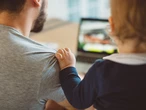
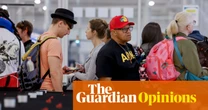

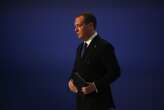
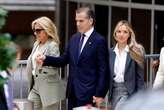

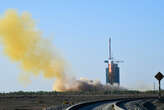


No comments